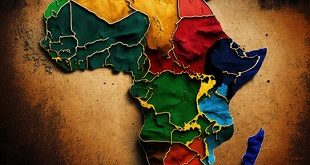
By Independent Team & Agencies
Why Beijing’s defence ministers visited Kampala with US$2.3m cheque
Little by little China is forming military links in Africa and in the Indian Ocean in order, experts say, to protect Beijing’s economic interests in the region.
With trade exchanges between China and Africa totaling US$ 126.9 billion last year, the stakes are sizeable.
In a sign of China’s growing influence, the influential Fitch Ratings data released in late December showed that the Chinese Export-Import Bank had in the past 10 years loaned more money to sub-Saharan African countries than the region’s traditional source of development funds, world Bank.
According to Fitch Ratings over 10 years the World Bank loaned the region US$ 547 billion U.S. dollars, which was less than what the China Import and Export Bank provided over the same period by US$ 12.5 billion.

A large number of Chinese loans to Africa promote local economic development and enable China access to adequate supplies of raw materials. Chinese loans to African countries most are favoured because they do not stringent political conditionalities associated with the World Bank, and are of low interest rates and flexible repayment methods.
China has set up a raft of cooperation ventures in an attempt to secure its investment zones in Africa. Angola, Ethiopia, Nigeria and Sudan are China’s most important receiving countries loans.
But last November Beijing committed to supporting Ugandan forces operating in Somalia in a sign of its growing direct involvement in Uganda’s military adventures. Until now, the Ugandan forces on the African Union Mission in Somalia (AMISOM) have been funded by the U.S. and its allies in the so-called war against terror.
China pledged more than US$2.3 million in military assistance to Uganda during a high-profile visit to Kampala by Beijing’s Defence minister, Liang Guanglie, in November.
“The agreement we signed was for 15 million yuan in support for the UPDF (Uganda People’s Defence Force) for its operations as part of AMISOM and for domestic capacity building,” said army spokesman Col. Felix Kulayigye.
However, analysts have noted that China’s influence in Uganda has been growing since political opposition to President Yoweri Museveni’s 26-year rule exploded soon after the elections last year. Museveni’s brutal suppression of the protests shocked his erstwhile backers, the U.S who reacted by treating Museveni as a “necessary but inconvenient ally”.
At the height of the elections, donors were concerned about the implications on the economy of President Museveni’s extensive off-budget expenditures including a Shs 600 billion `emergency’ supplementary budget” and another US$600 million he spent on buying six SU-30 MK2 fighter jets from Russia.
At the time, a high ranking official of the donor community told The Independent that they were considering suspension of donor/World Bank budget support to Uganda. Some of them have since carried out their threat. President Museveni is therefore, increasingly looking eastwards to China for financial support.
Somalia, which has been at war for the past two decades, is “of crucial importance for China,” says Jonathan Holslag, of the Brussels Institute of Chinese Contemporary Studies.
“Not only is Beijing well aware that the failed state is a sanctuary for pirates that threaten its merchant and fishery fleet in the Indian Ocean; it also considers it to be an important source of instability and terrorism in other African countries where it has large economic interests,” Holslag said.
“It is very clear that the Chinese leaders recognise that military force will play a bigger role to safeguard China’s overseas interests,” Holslag told the French news agency, AFP, “There is willingness and even a consensus, in China, that this process will take place.”
Uganda is the main troop contributing country to the 9,700-strong AU force, which is battling Al-Qaeda-linked al-shabaab insurgents in Somalia.
There were no further details as to exactly what the military support China is offering to Uganda entailed.
Chinese officials also said that Beijing was looking to build road and railway infrastructure in Uganda during a meeting with President Yoweri Museveni.
A statement from State House said during the meeting Museveni said he was looking forward to having more trade with China.
China has ratcheted up its involvement in Uganda in recent years and has pledged to build a new toll road linking Kampala to Entebbe International Airport.
Chinese state-owned oil company CNOOC is currently awaiting final approval of a US$2.9 billion joint deal with France’s Total to buy two-thirds of Anglo-Irish firm Tullow Oil’s interests in Uganda’s embryonic oil industry.
Final approval of the deal — which would see massive investment in Uganda’s oil sector — is currently being delayed by wrangles in the country’s parliament over allegations of official corruption in the burgeoning industry.
Holslag told AFP that China “is (also) making eyes at the oil reserves in Ethiopia” and private Chinese firms have started linking up the Ethiopian hinterland to the port of Berbera in the breakaway region of Somaliland.
“China has … almost permanent exchanges with officials from Ethiopia, Kenya, and Somaliland on security in the Horn,” he said. China is also helping the Indian Ocean Island of the Seychelles fight piracy as its efforts to keep its trade safe have extended to the high seas.
Oceanic strategy
Strategically, the Indian Ocean is important for China because 85% of its oil imports and 60% of its exports are routed via the Gulf of Aden.
Beijing does not so far have any military base in the region: its military presence consists of three vessels in the Gulf of Aden to fight Somali pirates.
But the deployment of those ships in 2009, the first of its kind for the Chinese navy, was already highly symbolic.
For the moment, cooperation between China and the islands of the Indian Ocean is still limited to “low profile military-to-military exchanges, but it is getting broader and more structured,” Holslag told AFP.
“The mere fact that China has a multi-year naval presence in the Gulf of Aden has great symbolic and diplomatic significance,” said Frans-Paul van der Putten, senior research fellow at the Netherlands Institute of International Relations Clingendael.
“Symbolic because it shows other countries that China is an emerging naval power in the region, and diplomatic because China uses its navy ships for occasional visits to ports along the Indian Ocean rim, which helps it strengthen its diplomatic ties with countries in the region,” he added.
During an unprecedented visit by Chinese Defence Minister Liang Guanglie in December, the Seychelles asked China to set up a military presence on the archipelago to help fight piracy in the Indian Ocean.
Victoria is ruling out a military base but is looking rather at having “reconnaissance planes or patrol ships stationed” there, along the lines of what the US and Europe do, Foreign Affairs Minister Jean-Paul Adam said.
“China needs port infrastructure to supply its ships in the Indian Ocean, and covering a wider zone could make sense,” said Mathieu Duchâtel of the Stockholm International Peace Research Institute.
World reacts
Both Washington and New Delhi, already concerned about China’s activities in the Pacific, take a dim view of its ambitions in the Indian Ocean.
“It appears that, for now, the US and India are not very much alarmed by the relatively modest Chinese military activities in the Indian Ocean region,” van der Putten said.
However “the US seems to welcome a greater Chinese involvement in addressing non-traditional security issues such as piracy, but is at the same time worried that China’s growing international influence undermines US interests.”
“In India there are concerns about a possible build-up of Chinese military power in the Indian Ocean,” he added.
“This could ultimately affect the geopolitical balance between India and China, in particular with regard to the disputed parts of the Sino-Indian border and with regard to the relationship between India and Pakistan, a country with close ties to China.”
Chinese investors
Back in Uganda, despite the tough 2011, China maintained its position, just behind Kenya and India, as one of the top ten sources of investment in Uganda, according to the Uganda Investment Authority (UIA) report for the period July to September 2011.
The UIA statistics show that China is Uganda’s number one source of imports. Uganda imports goods worth $250m from China per annum. There are no clear statistics on trade between Uganda and Dubai.
Ibrahim Sekito, the spokesman Kampala City Traders Association (KACITA) which represents many in the business community, estimates that over 50 per cent of the traders in Kampala shop from China. Sekito who has imported from China himself says they shop mainly from Guangzhou, Wiwu, and Shenzhen Port.
According to research done by the Federation of Uganda Employers (FUE), mainly small and medium size Chinese enterprises that employ less than 50 people flock to Uganda. Of the 150 Chinese enterprises surveyed, about 70% were SMEs.In October last last year, UIA a delegation of business people from the Chinese Free Trade Union led by Li Shiming visited Uganda and held talks with President Yoweri Museveni.
The UIA wants the Chinese to invest in in Uganda’s textile, construction and pharmaceutical sectors.
In 2010, China was named as the leading investor in Uganda’s economy by the UIA. The 2009/2010 UIA report showed that 31 Chinese projects worth Shs 553.3 billion had been licensed.
A report by the Economic Policy Research Center titled: China-Africa Economic Relations: The case for Uganda shows that the two nations have a long history of diplomatic relations dating as far back as the immediate post-independence era. It showed that in 1971, at the 26th General
Assembly of the United Nations (UN), Uganda voted in favor of the resolution on the restoration of China’s lawful seat in the world body and in 2000 supported the bill put forward by China on the maintaining and observing of the Anti-Ballistic Missile Treaty in the UN.
Since 1962, China has helped Uganda to set up the Kibimba (now Tilda) and Doho Rice Schemes, the Kampala Ice Plant, methane-generating pits, the Foodstuff Porcelain Research Center and the Mandela National Stadium. China has also provided Uganda with civilian and military equipment and trucks, porcelain research equipment and other small-scale processing equipment and necessary accessories. Chinese companies began the construction and service business in Uganda in 1987, mainly covering housing projects, road and bridge construction. Currently, there are 10 Chinese companies running that kind of business in Uganda, including Sichuan International Economic and Technical Cooperation Co Ltd and Jiangsu International Economic and Technical Cooperation Co Ltd.
Recently, China has constructed offices for Uganda’s Ministry of Foreign Affairs and the twin-tower Offices of the President.
China’s main exports to Uganda are mechanical and electrical appliances, textiles, garments, pharmaceuticals, porcelain and enamel products, and footwear. China’s imports from Uganda are coffee and plastics.
In August 1999, China and Uganda signed the 2000-2002 Implementation Program of the Agreement on the Cultural Cooperation between China and
Uganda. Since 1959, China has altogether received 313 Ugandan students.
Ban Café, a Ugandan Company signed a contract with a Chinese company to set up a coffee shop in Beijing.
Within the framework of the Sino-Africa Cooperation Forum, China has exempted the tariff on certain commodities to 25 underdeveloped African countries Uganda inclusive.
China has offered Uganda grants for academic research activities, training and exchange programs, and computers. Its companies are involved in various big contracts in sectors such as power, infrastructure, ICT, and construction.
Some of the activities of Chinese migrants, mainly in the artisanal and retail trade sectors, have generated resentment as they compete directly with locals.
Both finished Chinese goods and rwa materials are preferred by consumers because they are usually priced lower than the locally produced ones.
 The Independent Uganda: You get the Truth we Pay the Price
The Independent Uganda: You get the Truth we Pay the Price


